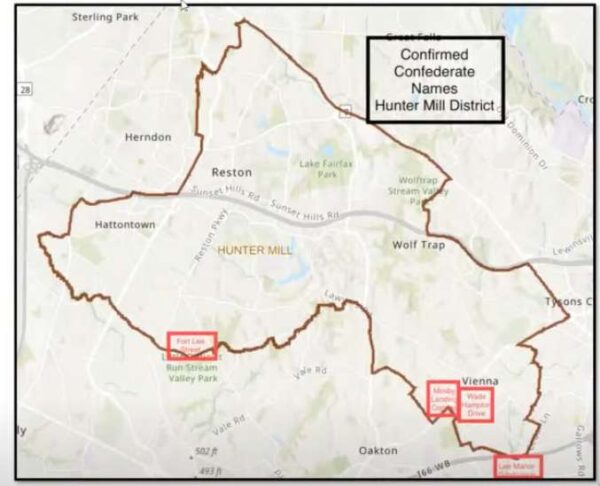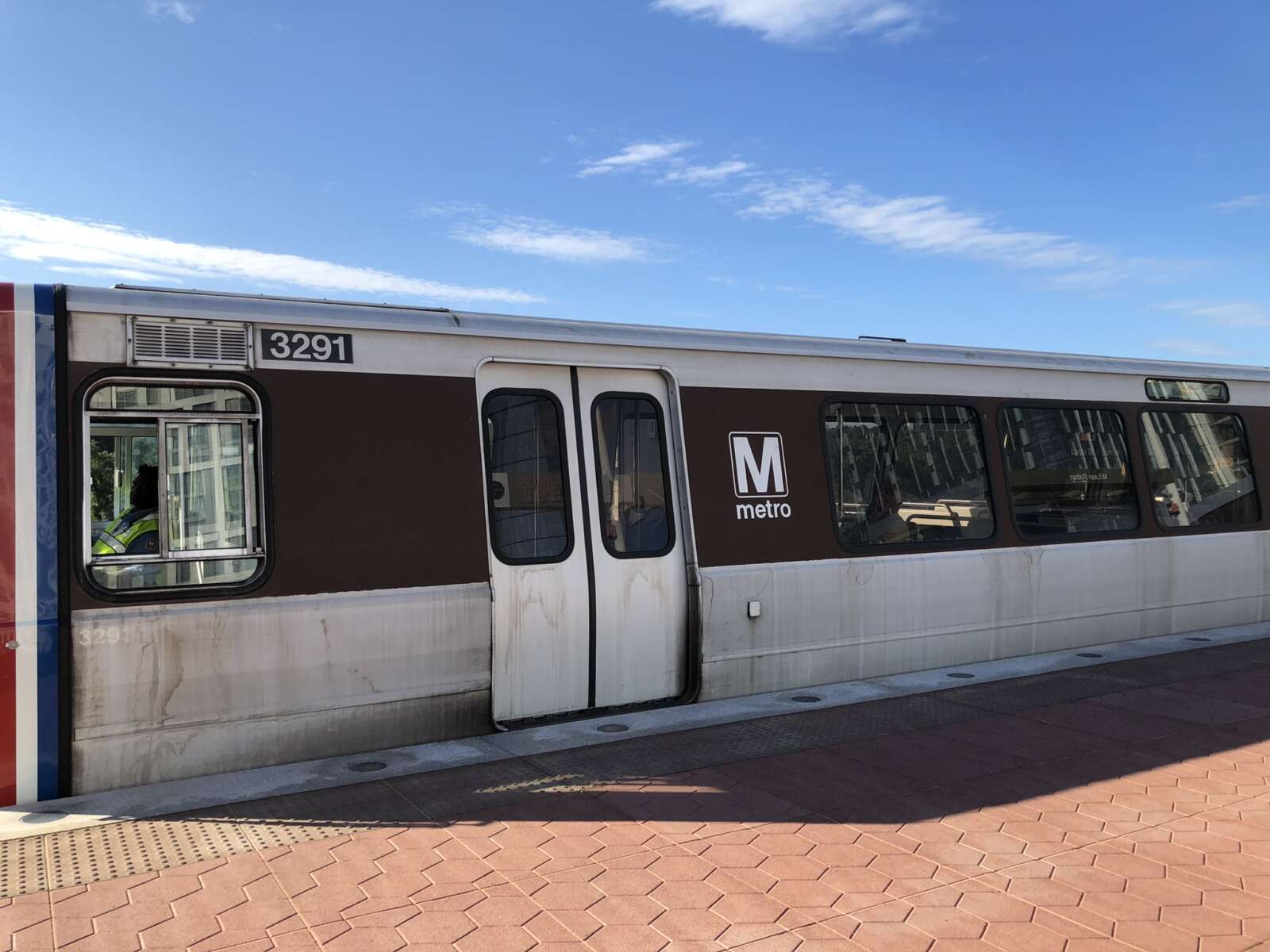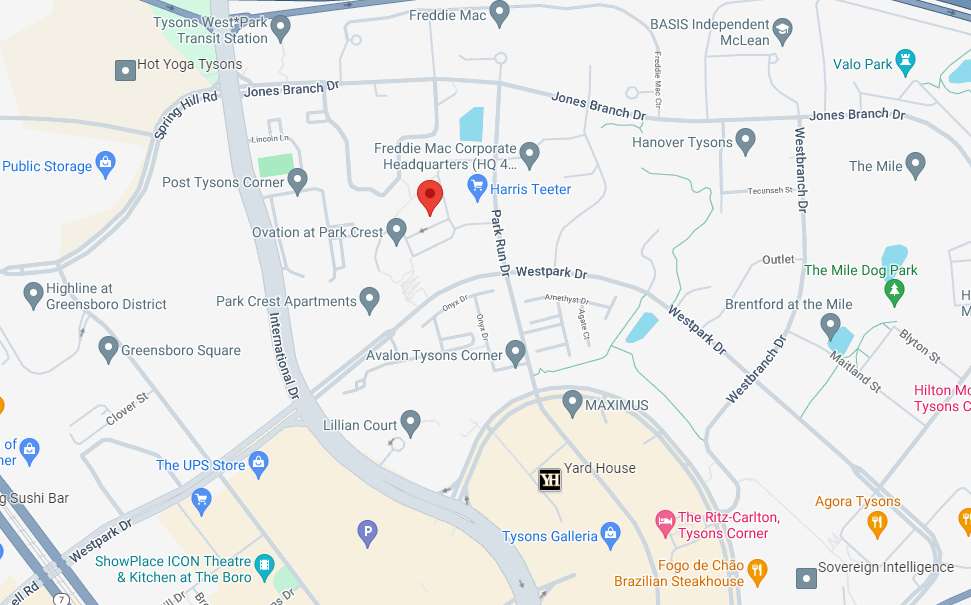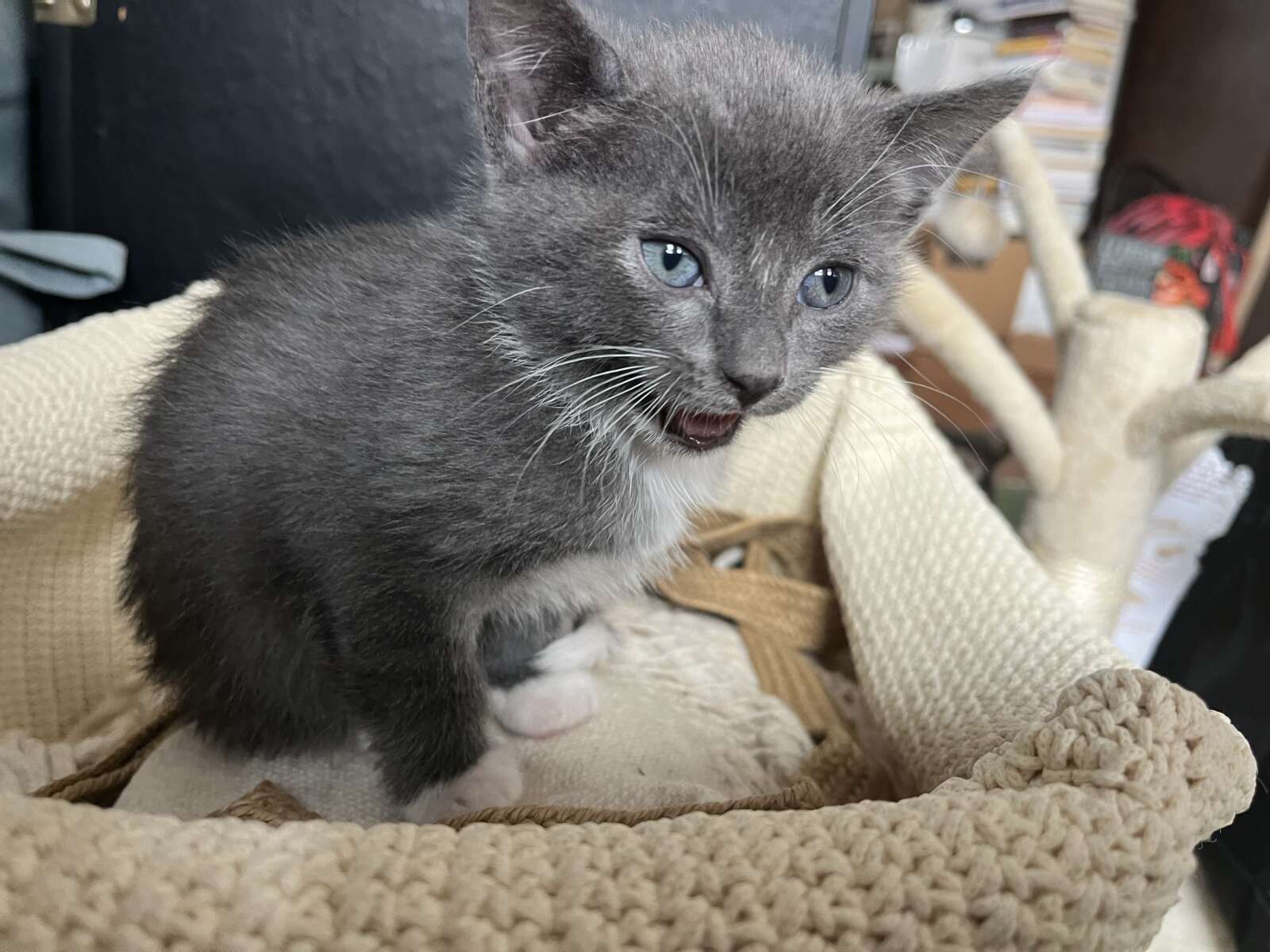Hunter Mill District Supervisor Walter Alcorn hosted a town hall on Tuesday (April 20) to talk about public places in Fairfax County named after Confederates.
The discussion was based on the Fairfax County History Commission’s 539-page inventory, which was first released in December and details the history and context of each place named after a prominent Confederate figure.
The project traces its roots to last summer, when the Fairfax County Board of Supervisors directed the commission to study the legal and financial implications of possible name changes throughout the county.
The commission determined that, out of about 26,500 total named places in the county, approximately 157 streets, parks, monuments, subdivisions, and public places in Fairfax County bear names with ties to the Confederacy.
“This research confirmed…that Fairfax County was a crossroads of war,” Fairfax County History Commissioner Barbara Naef said. “Combatants of both Union and Confederates flourished, camped, marched, clashed, and suffered both victory and defeat here.”
In addition to cataloging sites, the report provides appropriate context, history, and narrative for possible name change discussions, including a dive into “Lost Cause” ideology, its pervasiveness in Fairfax County, and how it influenced the naming of places.
The Lost Cause ideology encompasses myths used to rationalize Confederacy sympathy, mainly that the Civil War was not fought over slavery, the pre-war Southern way of life is to be celebrated, and that prominent figures like Confederate Gen. Robert E. Lee didn’t believe in slavery.
“There was an urging by some to exclude it from the report altogether or soften its tone,” Naef said. “These reactions prove the point. The perspective of the Lost Cause has been embraced by generations.”
In its report, the History Commission recommended making the inventory available to the public via the Fairfax County Public Library, which is currently the case, and using the report as a guide for “a robust public process for considering future actions.”
The Hunter Mill District town hall is one of the first steps in that process, members of the commission at the meeting noted.
Within the Hunter Mill District, there are believed to be four places named after Confederates: Fort Lee Street, Lee Manor, the Mosby’s Landing condominium complex, and Wade Hampton Drive.
Fort Lee Street in Herndon and Lee Manor along Lee Highway near Vienna both derive their names from Robert E. Lee.
Fort Lee Street was named in the mid-1970s when Fox Mill Inc. developed the Folkstone subdivision, while Lee Manor is directly tied to Lee Highway, which is in the process of being renamed.
The Virginia General Assembly passed a bill in February, allowing Arlington to rename their portion of Lee Highway.
Mosby’s Landing in Vienna takes its name from John Mosby, a Confederate commander who was also known as the “Gray Ghost.” The condo complex was built on the site where legend says that Mosby and his horse hid out from Union soldiers.
Vienna’s Wade Hampton Drive is named after a Confederate lieutenant general who reportedly led a unit of 600 men and horses down the road in 1865. After the war, Hampton criticized Reconstruction and worked to suppress the vote among South Carolina’s Black population when he became governor of the state.
According to the history commission, the Town of Vienna named the street after Hampton in recognition of the Civil War’s 100th anniversary. The town is currently in the process of having the road’s name changed.
“The town has appointed an ad hoc group to look at this street name and consider alternatives,” Fairfax County History Commissioner Anne Stuntz said.
While the Commission’s charge was to examine places named after Confederates, several residents suggested that places named after individuals involved in the “Mass Resistance” movement opposing school integration should also be re-examined.
Examples include former Fairfax County Public Schools Superintendent W.T. Woodson, who opposed desegregation and still has a high school bearing his name, though schools were overall not included in the history commission’s inventory.
Commenters also mentioned Carter Glass, a state senator who developed laws intended to prevent Black people from voting, including Virginia’s poll tax.
For years, the library at Lake Anne Plaza in Reston was named after Glass. Today, that building is now the Reston Museum.
Photo via Fairfax County/YouTube






